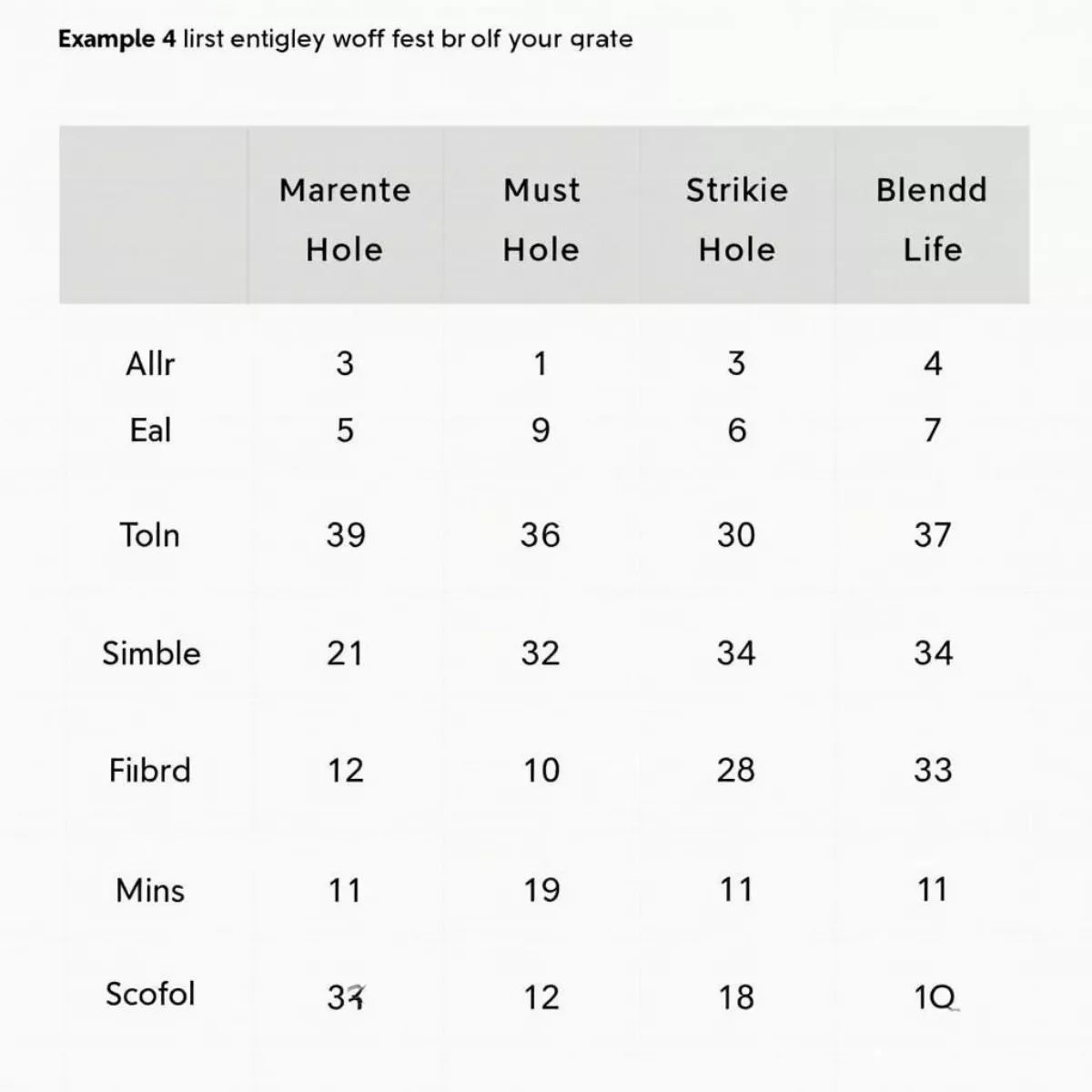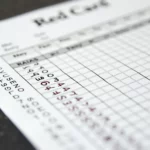Golf is a sport steeped in tradition and history, and however relaxing it can be, there’s a short but vital part of the game that can seem daunting to newcomers: golf scores. Whether you are a seasoned player or a beginner, understanding how golf scoring works is crucial to enjoying the game. In this guide, we’ll break down everything you need to know about golf scores, from basic terms to more complex concepts.
The Basics of Golf Scoring
Let’s start with the fundamentals. Golf is unique because it’s not just about getting the ball in the hole; it’s about how many strokes it takes you to do that. Here’s a breakdown of the terms you’ll encounter:
- Par: The number of strokes an expert golfer is expected to take to complete a hole or a course.
- Birdie: One stroke under par for a hole.
- Eagle: Two strokes under par for a hole.
- Bogey: One stroke over par for a hole.
- Double Bogey: Two strokes over par for a hole.
How Scoring Works
When you’re playing a round of golf, each player keeps track of how many strokes they take on each hole. The total number of strokes taken is the player’s score.
Example of Scoring in Golf
Let’s visualize this with an example. Imagine you are playing an 18-hole course where each hole is a par 4:
| Hole | Par | Your Strokes | Score Type |
|---|---|---|---|
| 1 | 4 | 5 | Bogey |
| 2 | 3 | 2 | Birdie |
| 3 | 5 | 5 | Par |
| … | … | … | … |
| 18 | 6 | 7 | Bogey |
Total Score: If you shot 5 on hole 1, 2 on hole 2, 5 on hole 3, and so forth, just add it all up. If your total number of strokes for the 18 holes equals 90, and the total par for the course was 72, then your score would be +18 (90 – 72 = +18).
 Example of a golf scorecard
Example of a golf scorecard
Scoring Systems
Stroke Play vs. Match Play
Understanding the two primary types of golf scoring—stroke play and match play—will clarify how the competition works.
- Stroke Play: This is the most common format. Every stroke you take is counted across the entire round.
- Example: At a tournament, if you finish with a score of 80 and your competition scores 82, you win by 2 strokes.
- Match Play: In this format, you’re only competing against one player per hole.
- Example: If you win more holes than your opponent, you win the match, regardless of the total number of strokes taken.
Stableford Scoring
Another popular system is Stableford, where players earn points based on the number of strokes taken in relation to par. Here’s how it generally works:
| Score | Points |
|---|---|
| Hole-in-One | 5 |
| Eagle | 4 |
| Birdie | 3 |
| Par | 2 |
| Bogey | 1 |
| Double Bogey+ | 0 |
This system encourages players to take risks, as the aim is to accumulate the most points rather than simply to post the lowest score.
 Table illustrating the Stableford scoring system in golf
Table illustrating the Stableford scoring system in golf
Net vs. Gross Scores
- Gross Score: This is the total number of strokes taken, without any adjustments.
- Net Score: This adjusts your score by subtracting any handicap you may have.
Understanding Handicaps
Handicaps are essential for allowing players of various skill levels to compete fairly. A golf handicap is a measure of a golfer’s potential ability.
Example of a Handicap Calculation
If your course’s par is 72 and your handicap is 18:
- Your benchmark would be = 72 + 18 = 90.
- If you score 85, your net score would be 85 – 18 = 67.
Keeping Track of Your Score
You can record your score using a scorecard. Most clubs will provide a scorecard with necessary details, including par for each hole.
- Tips for Keeping Score:
- Record after each hole: Don’t wait until the end of the round to tally strokes.
- Be clear: Ensure everyone in your group knows the par for each hole, making it easier to understand how everyone is doing.
- Use technology: Consider using apps dedicated to tracking golf scores for ease and accuracy.
 Golfers keeping track of scores using both traditional scorecard and mobile app
Golfers keeping track of scores using both traditional scorecard and mobile app
Key Takeaways
- Understand the fundamental terms: par, birdie, eagle, bogey, etc.
- Know the different scoring systems: stroke play, match play, and Stableford.
- A golf handicap levels the playing field among players of varying skill levels.
- Keep your scores consistently by using a scorecard or a mobile application.
Frequently Asked Questions (FAQ)
- What is a good golf score?
- A good score can vary significantly, but a score under par (for example, below 72 for a standard 18-hole course) is generally considered excellent.
- How do you calculate a golf handicap?
- Handicaps are calculated based on your average scores and the difficulty rating of the courses you play.
- What is course rating?
- The course rating is a numerical measure of course difficulty, affecting how handicaps are calculated.
- Can I use my smartphone for scoring?
- Absolutely! Many applications are available for keeping track of your scores and can even calculate it for you.
- What does it mean to score a double bogey?
- A double bogey indicates you took two strokes over par for a hole.
- How can I lower my golf score?
- Focus on chipping, putting, and understanding course management. Regular practice and getting lessons from a professional can help.
- What is the purpose of Stableford scoring?
- Stableford encourages aggressive play since players earn points based on their performance relative to par rather than competing to have the lowest stroke count.
- How do I interpret my golf scores across various rounds?
- Compare your scores against the course par and your average scores to determine improvement.
- Can beginners use handicaps?
- Yes! Handicaps help beginners compete more fairly with more experienced players.
- What do I do if I forget my score?
- Always try to keep track hole-by-hole as you play. If you forget, it’s best to estimate, but honesty is crucial in the sport.
Golf can be a meticulous but rewarding game that combines skill, strategy, and a bit of luck. Understanding how golf scores work can enhance your enjoyment and improvement levels in the game. Keep practicing, stay patient and, most importantly, enjoy your time out on the course!

